Abstract
An hypothesis that there was an annual emergence of Rift Valley fever virus in Zambia, during or after the seasonal rains, was examined with the aid of sentinel cattle. Serum samples taken during 1974 and 1978 showed evidence of epizootic Rift Valley fever in Zambia, with more than 80% positive. A sentinel herd exposed from 1982 to 1986 showed that some Rift Valley fever occurred each year. This was usually at a low level, with 3-8% of the susceptible cattle seroconverting. In 1985-6 more than 20% of the animals seroconverted, and this greater activity was associated with vegetational changes--which could be detected by remote-sensing satellite imagery--which have also been associated with greater virus activity in Kenya.
Full text
PDF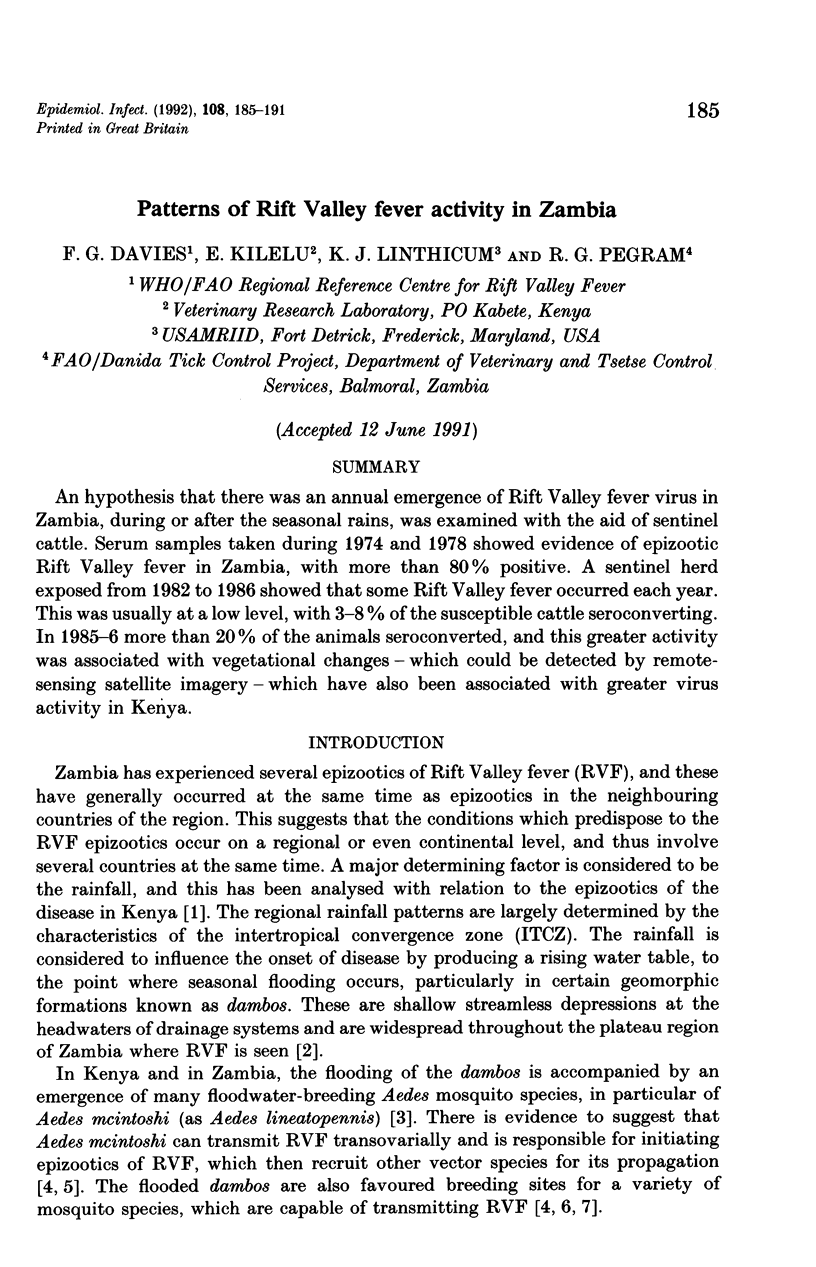
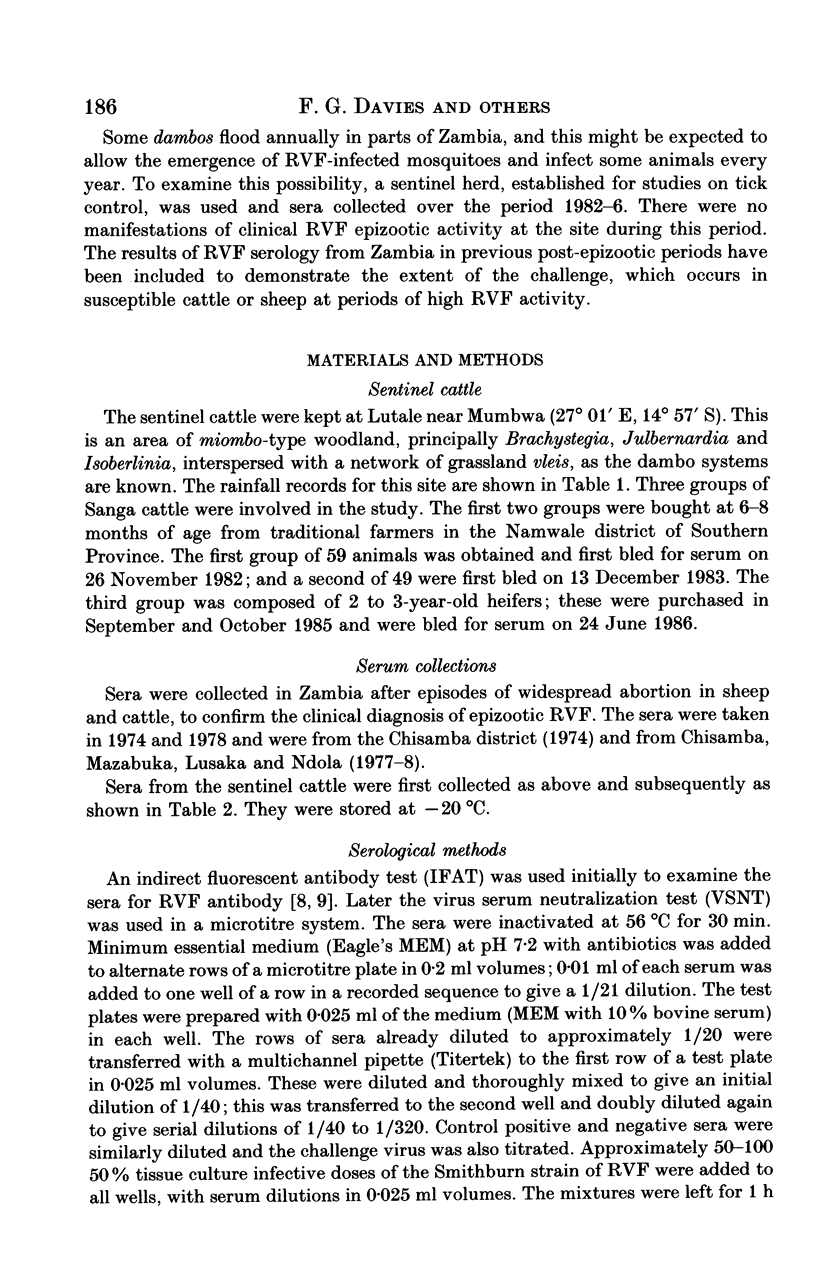
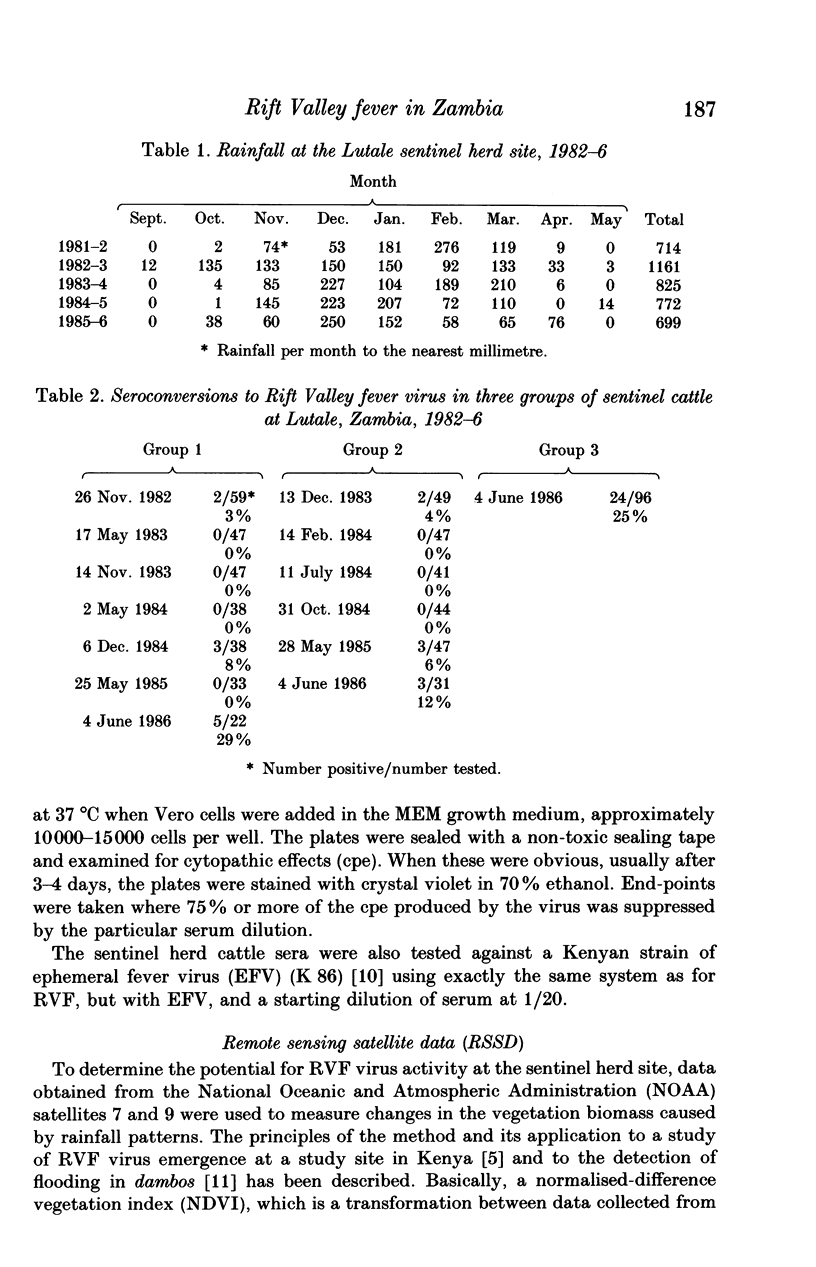
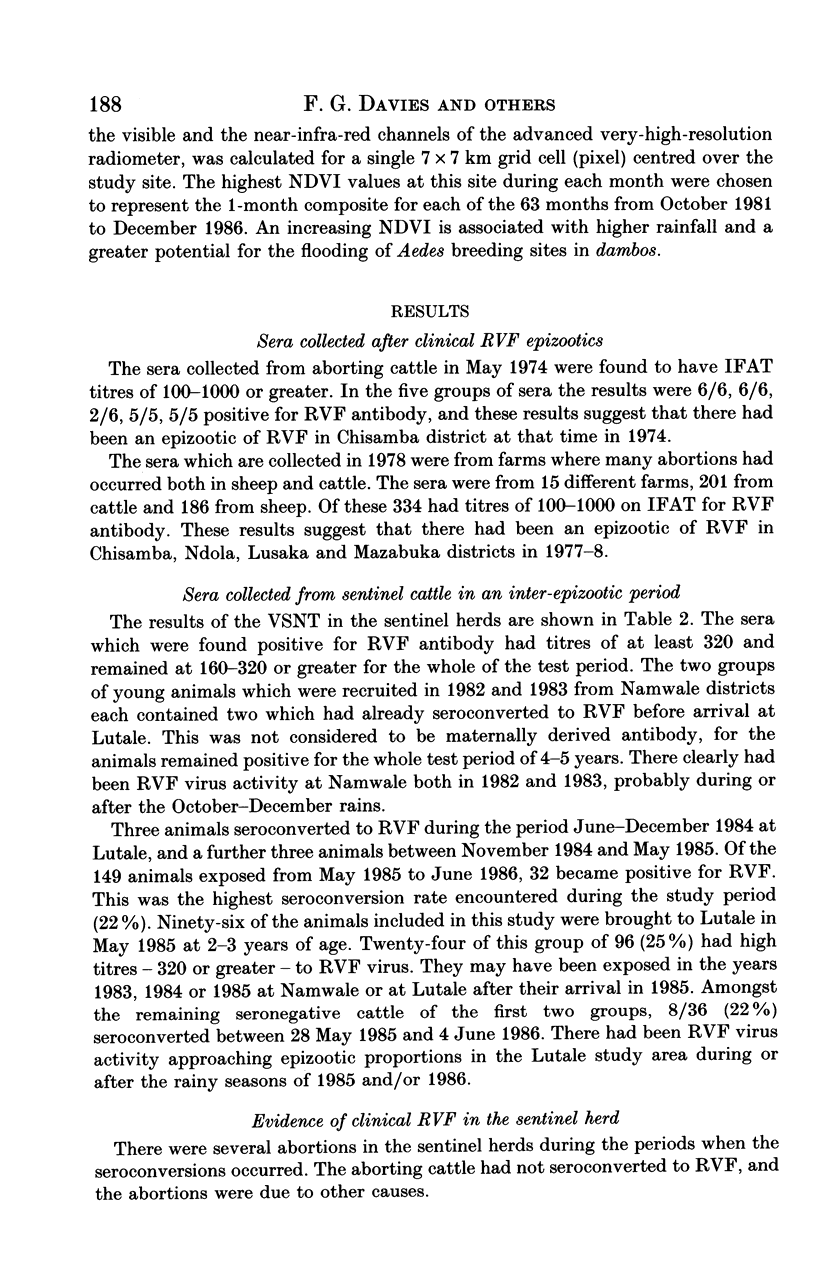
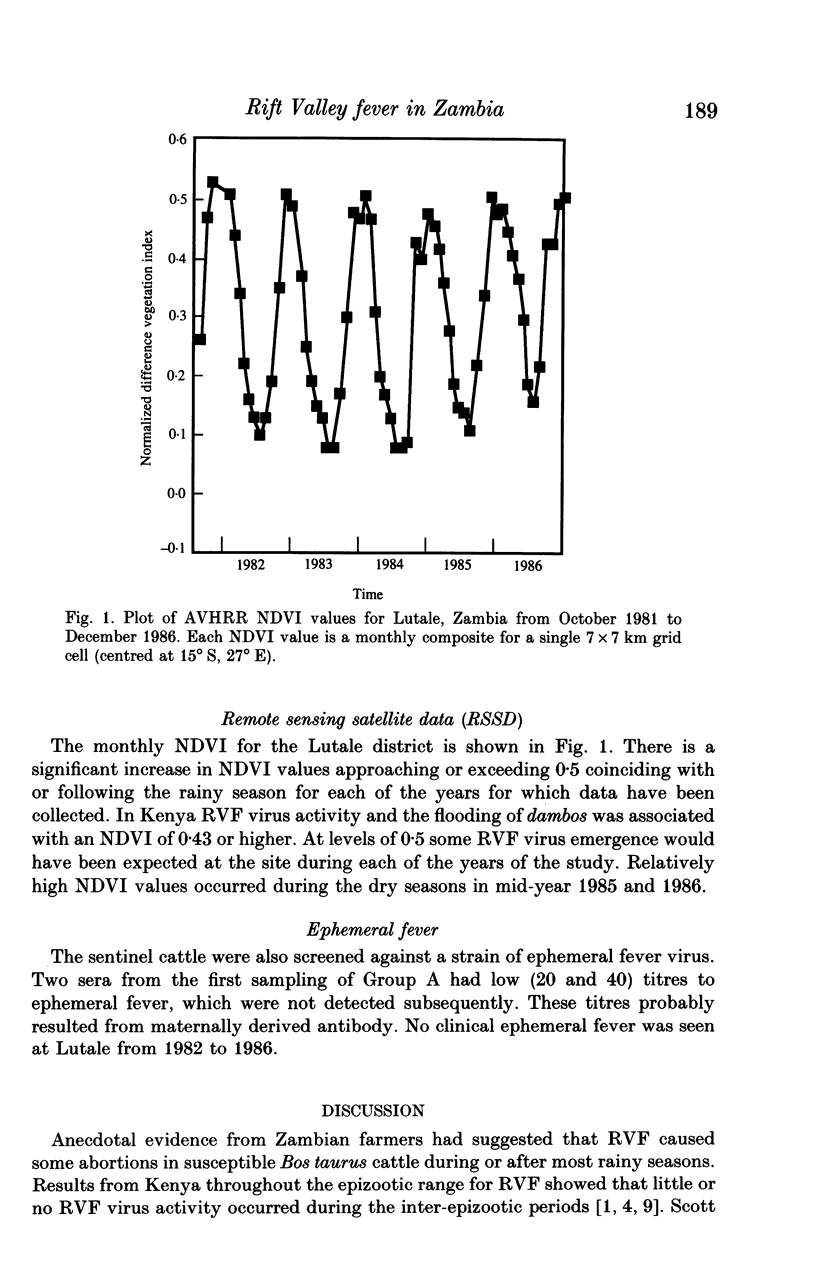
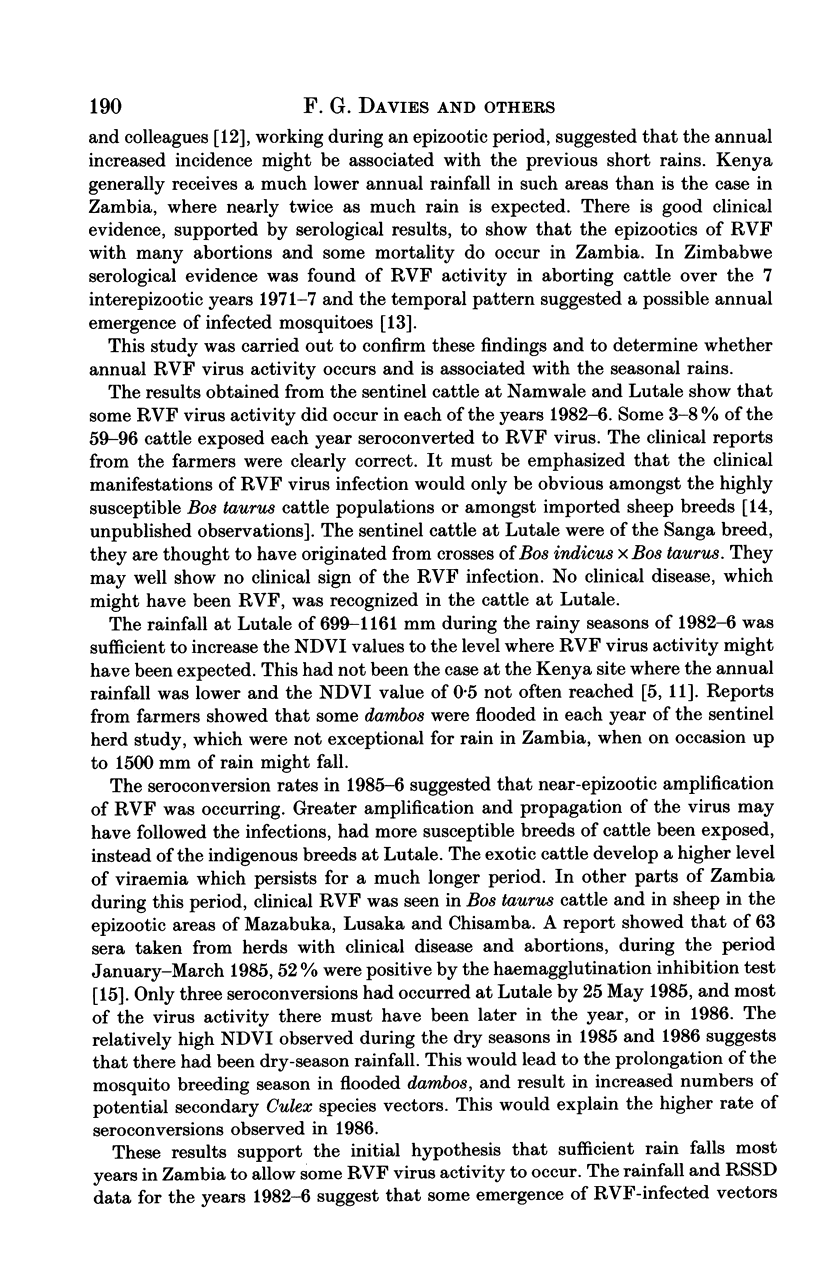

Selected References
These references are in PubMed. This may not be the complete list of references from this article.
- Coackley W., Pini A., Gosden D. Experimental infection of cattle with pantropic Rift Valley fever virus. Res Vet Sci. 1967 Oct;8(4):399–405. [PubMed] [Google Scholar]
- Davies F. G., Highton R. B. Possible vectors of Rift Valley fever in Kenya. Trans R Soc Trop Med Hyg. 1980;74(6):815–816. doi: 10.1016/0035-9203(80)90213-8. [DOI] [PubMed] [Google Scholar]
- Davies F. G., Linthicum K. J., James A. D. Rainfall and epizootic Rift Valley fever. Bull World Health Organ. 1985;63(5):941–943. [PMC free article] [PubMed] [Google Scholar]
- Davies F. G. Observations on the epidemiology of Rift Valley fever in Kenya. J Hyg (Lond) 1975 Oct;75(2):219–230. doi: 10.1017/s0022172400047252. [DOI] [PMC free article] [PubMed] [Google Scholar]
- Davies F. G., Walker A. R. The isolation of ephemeral fever virus from cattle and Culicoides midges in Kenya. Vet Rec. 1974 Jul 20;95(3):63–64. doi: 10.1136/vr.95.3.63. [DOI] [PubMed] [Google Scholar]
- Linthicum K. J., Bailey C. L., Davies F. G., Tucker C. J. Detection of Rift Valley fever viral activity in Kenya by satellite remote sensing imagery. Science. 1987 Mar 27;235(4796):1656–1659. doi: 10.1126/science.3823909. [DOI] [PubMed] [Google Scholar]
- Linthicum K. J., Bailey C. L., Tucker C. J., Mitchell K. D., Logan T. M., Davies F. G., Kamau C. W., Thande P. C., Wagateh J. N. Application of polar-orbiting, meteorological satellite data to detect flooding of Rift Valley Fever virus vector mosquito habitats in Kenya. Med Vet Entomol. 1990 Oct;4(4):433–438. doi: 10.1111/j.1365-2915.1990.tb00462.x. [DOI] [PubMed] [Google Scholar]
- Linthicum K. J., Davies F. G., Kairo A., Bailey C. L. Rift Valley fever virus (family Bunyaviridae, genus Phlebovirus). Isolations from Diptera collected during an inter-epizootic period in Kenya. J Hyg (Lond) 1985 Aug;95(1):197–209. doi: 10.1017/s0022172400062434. [DOI] [PMC free article] [PubMed] [Google Scholar]
- McIntosh B. M. Rift Valley fever. 1. Vector studies in the field. J S Afr Vet Med Assoc. 1972 Dec;43(4):391–395. [PubMed] [Google Scholar]
- Pini A., Lund L. J., Davies F. G. Fluorescent and neutralizing antibody response to infection by Rift Valley fever virus. J S Afr Vet Assoc. 1973 Jun;44(2):161–165. [PubMed] [Google Scholar]


